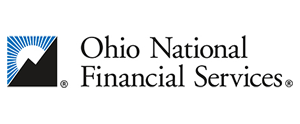Projected cost increases for all types of medical plans are anticipated to be down by between 0.1 and 0.5 percent in 2014, according to a survey by Buck Consultants. The survey notes that this continues the favorable trend of slow, steady declines generally experienced since 2010.
In a national survey of 126 insurers and administrators, Buck measured the projected average annual increase in employer-provided health care benefit costs. Insurers and administrators providing medical trends for the survey cover 119 million people.
In its 28th National Health Care Trend Survey, Buck found costs are projected to increase at rates that are lower than those in its recent prior surveys.
Type of Plan: Preferred Provider Organization (PPO)
28th Survey: 8.7%
27th Survey: 9.0%
26th Survey: 9.2%
Type of Plan: Point-of-Service (POS)
28th Survey: 8.5%
27th Survey: 8.8%
26th Survey: 9.0%
Type of Plan: Health Maintenance Organization (HMO)
28th Survey: 8.6%
27th Survey: 8.7%
26th Survey: 8.8%
Type of Plan: High Deductible Health Plan (HDHP)
28th Survey: 8.6%
27th Survey: 9.1%
26th Survey: 9.1%:
Some survey respondents cited reduced utilization as the primary reason for the decrease. "This may be a result of the economic slowdown and its impact on consumers' willingness to seek medical treatment," said Harvey Sobel, FSA, a Buck principal and consulting actuary, who co-authored the survey. "Even though the decline is good news, most plan sponsors still find 8-9 percent cost increases unsustainable."
Health insurers reported an average prescription drug trend of 9.2 percent, a decrease of 0.7 percent from the prior survey. On the other hand, pharmacy benefit managers, who generally do not take any underwriting risk, reported a weighted average trend factor of 4.1 percent- -less than half of the factor reported by health insurers-- but still up by 0.3percent from the 3.8 percent reported in the prior survey.
For plans that supplement Medicare, health insurers reported a trend of 5.5 percent excluding prescription drug coverage, up from 4.1 percent in the prior survey. Medicare Supplement plans generally have lower trends than other medical plans due to the impact of federal controls on Medicare fees and the smaller increases expected in Medicare deductibles and copays.
"It's too soon to tell the impact of public and private health exchanges on trend," said Daniel Levin, FSA, a Buck principal and consulting actuary, who co-authored the survey. "It may take another few years before we really know if (and by how much) the exchanges will "bend" the cost curve."
Health insurers use trend factors to calculate premium rates, and large self-funded employers use these trend factors to budget their future health care costs. In general, trend factors provide for price increases that may result from such variables as inflation, utilization of services, technology, changes in the mix of services, and mandated benefits.
For more information about the survey, visit www.bucksurveys.com.
---------
By Ayo Mseka
Editor-in-Chief






.png?width=300&height=300&name=CC%202025%20Ad%20(300%20x%20300%20px).png)
.png?width=300&height=600&name=Tax%20Talk%20Graphic%20-%20email%20tower%20(300%20x%20600%20px).png)



.png?width=300&name=NAIFA-FSP-LH%20with%20tagline%20-%20AT%20blog%20email%20ad%20(300%20x%20250%20px).png)
.png?width=728&height=89&name=2024%20Congressional%20Conference%20(728%20x%2089%20px).png)
